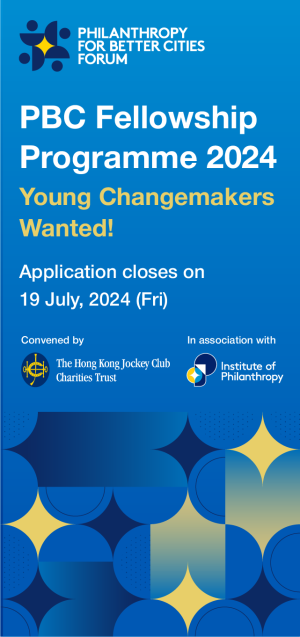As we come to the close of 2010, many of us are reviewing the latest studies and surveys to better understand what philanthropy will look like in 2011. Though most publications agree that the worst is behind us, there is still apprehension about what may happen next year, especially since 2010 saw many donors taking a ‘let’s wait and see’ approach to new or expanded giving that may shift philanthropic practices over the long term.
According to a study from the Foundation Center, most mid-size and large foundations in the US will maintain their 2010 giving levels or increase them. Only 15 per cent stated that their giving would actually decline. In many respects, this is good news for the many non-profit organizations that rely primarily on foundations for revenue, especially considering that most study participants also indicated that any changes made in light of the recession were not likely to be permanent. Still, foundation giving will need a few more years to rebound to pre-2008 levels, and there is the additional challenge of ‘replacing’ those foundations that closed during the recession or as a result of situations such as the Madoff scandal.
In light of all of these changes in the foundation world, a new emphasis is being placed on individual donors. In the past few years, almost every proposal that has come across my desk has indicated that major and individual gifts will be the main focus of fundraising efforts. In studies and interviews about individual giving, however, there is equal reason to be excited and cautious when undertaking this particular income diversification strategy.
Economic uncertainty continues to give donors pause. According to a Reuters article from 5 October, several US bank executives noted that their wealthiest clients were grappling with their own sense of financial loss and were concerned about both the longevity of their wealth and the impact that possible changes to the tax code might have on their capacity to give. Though the wealthy in the US are still giving, said one bank executive, they are being more strategic about their gifts. As such, donors are engaging in a longer and more thoughtful decision-making process prior to making a donation.
Beyond the wealthy (who account for over 80 per cent of individual giving in the US), smaller-scale donors are the ones reconsidering giving completely, assessing whether or not charitable gifts are even part of the budget this year. Though these donors account for a smaller portion of overall giving, they do form the base of many outreach and cultivation strategies, and tend to be long-term donors once committed to an organization or cause (compared to foundations). It is also just as difficult to re-secure such donors as it is to find new donors.
Overall, the funding context in which non-profits find themselves operating presents several challenges. On the programmatic side, it surely comes as no surprise that demand for services from non-profits continues to increase, especially in social service organizations. In a new study by the Nonprofit Research Collaborative, a majority of participating non-profits indicated that they will need to engage in cost-cutting measures such as reducing services, programmes, hours of operation and/or staffing in order to keep pace with the stagnant funding climate during the next year.
This situation creates a new tension around giving, especially for less formalized donors who lack specific guidelines or criteria that they can use to explain their decisions to organizations. More strategic giving is certainly applauded, but this change in approach by donors tends to place emotional as well as financial pressure on both funders and organizations as they adjust to new dynamics in the giving relationship.
Several articles over the past few years have outlined suggestions for how to engage in more thoughtful giving, but in my experience the key is for a donor to follow their instincts and be flexible. Many clients I work with have opted for a more cautious approach to their giving in the past few years, but they have remained true to the organizations they know best and are most passionate about. In most cases, these clients continue to provide ongoing general support and have expanded their giving to support strategies that will help organizations weather the financial storm. By listening to non-profit needs before making decisions, our clients have learned what would be most beneficial to organizations in both the short and the long term and have also cultivated a relationship of trust and partnership that has helped smooth over any potential tensions brought about by financial stress.
Thinking about next year, what we know for sure is that some non-profits will be forced to close their doors, and most others will struggle to provide quality programmes and services with fewer resources. We also know that individual giving remains the cornerstone of American philanthropy, so individuals will be called upon to help non-profits move forward (hopefully in a more streamlined manner). By focusing on the giving that is most meaningful for them, donors can explore more relevant and responsive opportunities and meet recipient needs on multiple levels for now and for the future.
Hilda Vega is senior advisor at Strategic Philanthropy, Ltd. Email hilda@stratphilanthropy.com






Comments (0)